Pildong Myeonok (필동면옥)
7.7Km 2021-03-30
26, Seoae-ro, Jung-gu, Seoul
+82-2-2266-2611
Most foods from the northern region are characterized by their mild taste. In particular, Pyeongyang-style cold buckwheat noodles has a milder flavor compared to Hamheung-style cold noodles. Pildong Myeonok's cold buckwheat noodles may taste bland for those who are used to stronger flavors or seasonings, but it is praised by others who prefer mild flavors. The refreshing after taste of broth and chewy noodles are enough to delight one's tastebuds.
Pyeongyang-style dumplings is another popular dish at Pildong Myeonok.
Usmania (우스마니아)
7.7Km 2017-10-10
34, Usadan-ro, Yongsan-gu, Seoul
+82-2-798-7155
Usmania is a Pakistani restaurant located in Itaewon. The restaurant imports all its ingredients from Pakistan (except for its meats and vegetables) in order to make the dishes as authentic as possible. Dishes are cooked in a tandoor, a clay oven used in just about every household in Pakistan.
La Maison de la Famille Yoo (유즈패밀리)
7.7Km 2022-09-21
19, Yulgok-ro 10-gil, Jongno-gu, Seoul-si
+82-2-3673-0323
La maison de la famille Yoo se situe dans le village Hanok de Bukchon, un village vieux de 600 ans qui se trouve entre les palais Gyeongbokgung, Changdeokgung et le sanctuaire Jongmyo. C'est un quartier historique où l'on trouve de nombreuses maisons traditionnelles appelées Hanok.
La maison traditionnelle Hanok de la famille Yoo offre des programmes de découverte de la culture coréenne aux visiteurs. Les réservations sont limitées aux groupes de 2 personnes ou plus. Les cours peuvent être donnés en anglais ou japonais.
Manboseong (만보성)
7.7Km 2021-03-26
53, Seosulla-gil, Jongno-gu, Seoul
+82-2-766-8488
It is a place where you can eat a variety of Chinese dishes at reasonable prices. This Korean dishes restaurant is located in Jongno-gu, Seoul. The most famous menu is sweet and sour pork.
Grand Hyatt Seoul (그랜드 하얏트 서울)
7.7Km 2021-02-27
322, Sowol-ro, Yongsan-gu, Seoul
+82-2-797-1234
The Grand Hyatt Seoul is an international business hotel located 10 minutes away from the center of the city and 20 minutes away from Yeouido and Gangnam, boasting a view of the Hangang River to the south and the scenery of Namsan Mountain to the north. It is also located only 70 minutes and 50 minutes away from Incheon International Airport and Gimpo International Airport respecitvely, making the hotel a convenient option for international travelers.
Grand Hyatt Seoul has twelve restaurants and bars that serve authentic meals and develop menus that lead the culinery trend. The hotel is also equipped with conference rooms, sports facilities, and spa services.
Parc du lac ouest de Séoul (서서울호수공원)
7.7Km 2022-09-29
20, Nambusunhwan-ro 64-gil, Yangcheon-gu, Seoul
+82-2-2604-3004
Le Parc du Lac Ouest, ouvert en octobre 2009, est un parc respectueux de l'environnement construit sous les thèmes de l'eau et du recyclage à travers le projet de développement du parc de l'ancienne station d'épuration d'eau de Sinwol située à Sinwol-dong, Yangcheon-gu.
Depuis sa première ouverture en tant que station d'épuration de Gimpo en 1959, il fut réouvert en tant que parc 50 ans plus tard après la conversion de la station comme abri pour les habitants. De plus, la forêt de Neunggolsan, frontière naturelle entre Séoul et Bucheon, fut restaurée en tant que forêt saine, et les sentiers de la montagne furent réhabilités pour être inclus au sein du parc. Il s'agit du plus grand parc à thèmes de la région du sud-ouest de la capitale grâce à sa superficie de 225 368㎡.
Bukchonmaru hanok guesthouse [Korea Quality] / 북촌마루한옥게스트하우스 [한국관광 품질인증]
7.7Km 2020-09-10
152, Changdeokgung-gil, Jongno-gu, Seoul
+82-10-3253-8751
Bukchonmaru Hanok Guesthouse is located between “Bukchon Views 2 and 3” on a hill in Bukchon Village in Seoul. This two-storied hanbok building with a terrace, which is rarely found among other hanok structures in the area, offers a splendid view of Seoul. In particular, the summit of a hill next to the main gate of Choong Ang High School where the guesthouse is situated is known as the filming location for the famous Korean TV series Winter Sonata (2002). When you open the main gate and go up to the first floor, a small yard is seen with a group of jars on one side. After entering the sliding door through the yard, there is daecheong maru (main floored room) that features the doors opening in all directions and a high ceiling with rafters, making the space open and cozy. The hanok building consists of two floors – the ground floor is equipped with special furniture, a jar table and a log chair made by the owner, and on the first floor are guestrooms comprised of one large room and two small rooms. The neat and clean rooms are designed in a simple way and have lovely bedding with the pattern of five cardinal colors. Its staff members can speak English and Chinese to communicate with guests from other countries. Every morning, guests engage in animated conversation while enjoying a Korean home-style breakfast prepared by the owner in a friendly atmosphere. After having breakfast, if guests want, they can try on traditional Korean clothes (hanbok) and take photographs inside and around the guesthouse to create interesting memories. The guesthouse also provides a hanbok rental service (KRW 30,000 for a day) and tourists wearing traditional Korean clothes can enter both Changdeokgung Palace and Gyeongbokgung Palace, which can be reached on foot within 10 to 15 minutes, free of charge. Moreover, guests can enjoy an open view of the area including Gahoe-dong, Gye-dong and even the lights of the Namsan Seoul Tower at night from the roof top.
Gyerim Sikdang (계림식당)
7.7Km 2021-03-19
39, Donhwamun-ro, 4-gil, Jongro-gu, Seoul
+82-2-2266-6962
This is a Korean cuisine located in Jongno, Seoul. The best menu at this restaurant is spicy braised chicken. Try Korean spicy chicken dishes.
The Hyusik Nouvelle - Itaewon à Séoul (더휴식 누베르 서울 이태원점)
7.7Km 2025-04-23
11, Usadan-ro 14-gil, Yongsan-gu, Seoul
The Hyusik Nouvelle - Itaewon à Séoul est un hebergement qui incarne un nouvelle vision de Séoul, portée par l'inspiration et la créativité. S'inspirant de la France, berceau de l'art libre et créatif, l'établissement transmet une sensibilité artistique à travers divers objets.
Il propose trois types de chambres : Collection T Room, avec lits jumeux, Collection D Room, avec lit double, Collection S Room, avec lit single.
Un salon commun est à disposition pour que tous les clients puissent profiter d'un séjour confortable. Au rez-de-chaussée se trouve <Byronic Pasta bar >, un restaurant spécialisé dans les pâtes. Le stationnement sur place étant difficile, il est recommandé d'utiliser un parking public à proximité après vérification.
Lycée Jungang (bâtiment principal) (중앙고등학교본관)
7.7Km 2019-07-22
164, Changdeokgung-gil, Jongno-gu, Seoul-si
+82-2-742-1321
Le lycée Jungang, situé à Jong-ro (près de Samcheongdong-gil), a été construit pour éduquer le peuple au coeur de la crise nationale qui sévissait au début du XXème siècle. Le bâtiment principal de l’école a été construit en 1937 après qu’un incendie ait détruit la bâtisse de deux étages d’origine en 1934. L’architecture gothique moderne de ce bâtiment est particulièrement significative pour les Coréens, car celui-ci a été conçu par un architecte coréen durant l’époque de la colonisation japonaise. Park Dong Jin, qui a conçu ce bâtiment, est l’un des premiers architectes coréens modernes, et a dessiné les plans du bâtiment principal et de la bibliothèque de l’université Korea, ainsi que l’immeuble du journal Chosunilbo. Le lycée Jungang a été désigné site historique n° 281. De nombreux leaders de la nation ont été éduqués derrière les murs de ce bâtiment gothique durant la période sombre où la Corée a tenté d’échapper au joug colonial.
Le bâtiment principal, situé en face de la porte principal, est une bâtisse en granit de deux étages en forme de H, conçu dans le style gothique, avec une tour de quatre étages au centre.
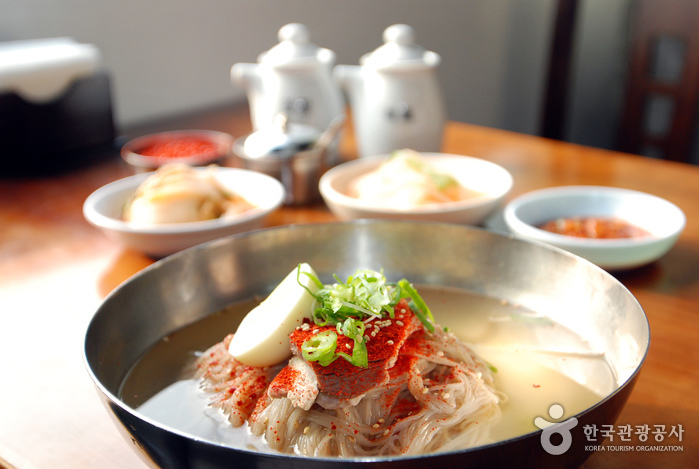
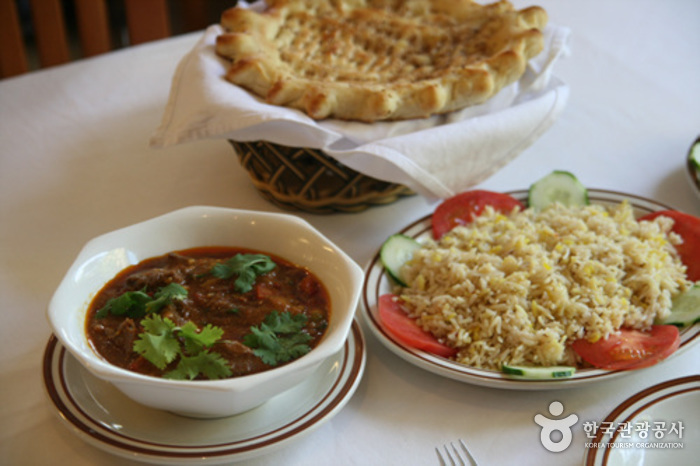
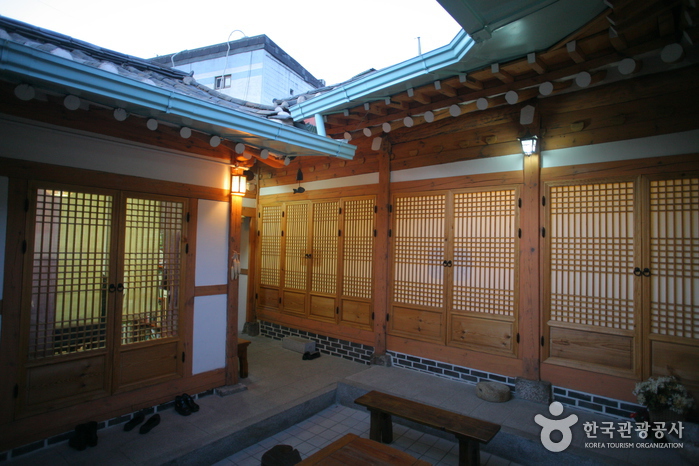
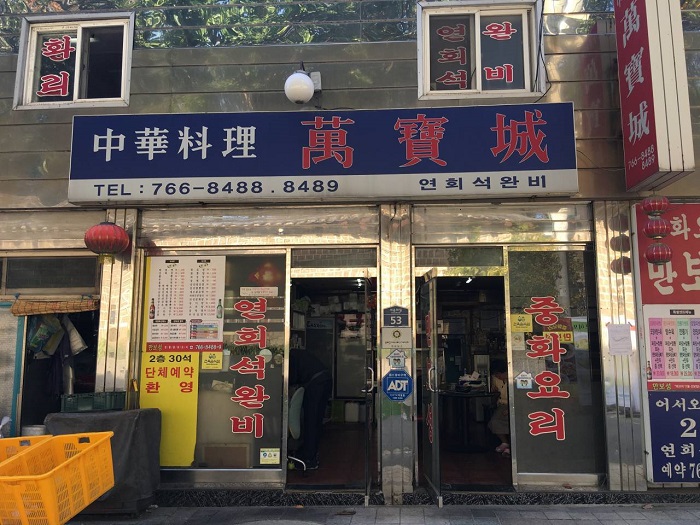

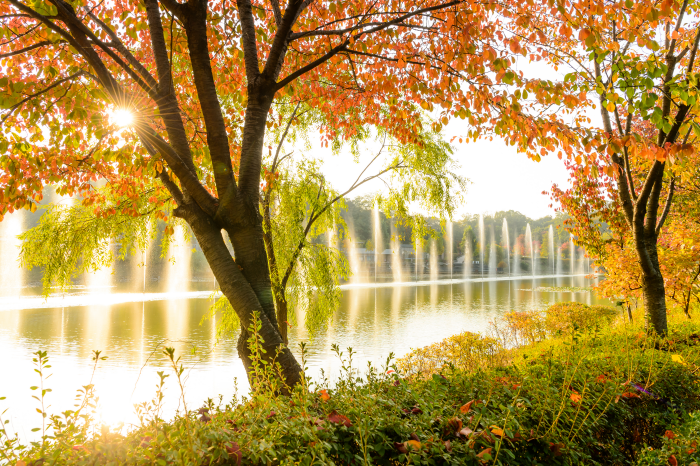
![Bukchonmaru hanok guesthouse [Korea Quality] / 북촌마루한옥게스트하우스 [한국관광 품질인증]](http://tong.visitkorea.or.kr/cms/resource/32/2574032_image2_1.jpg)
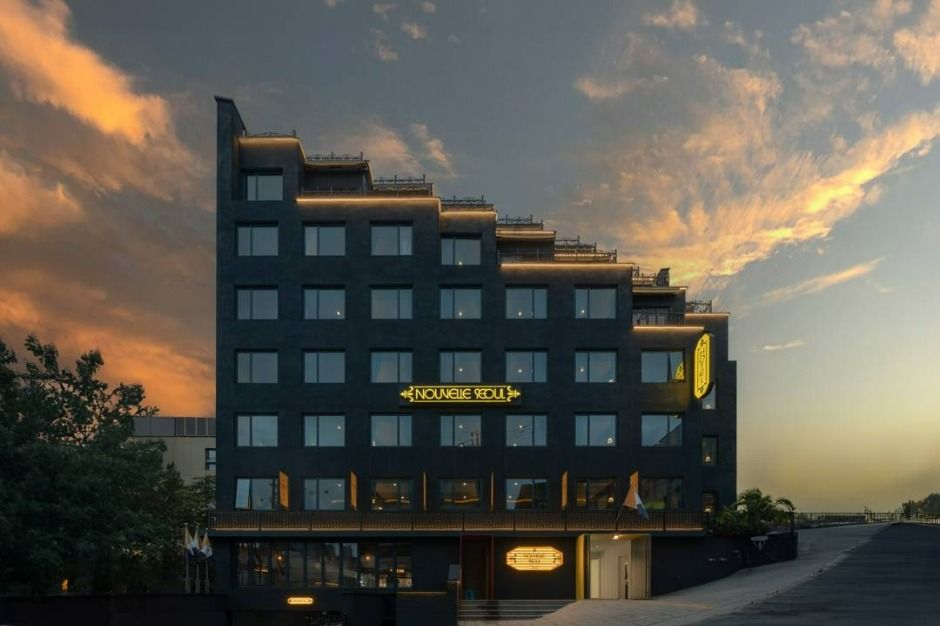
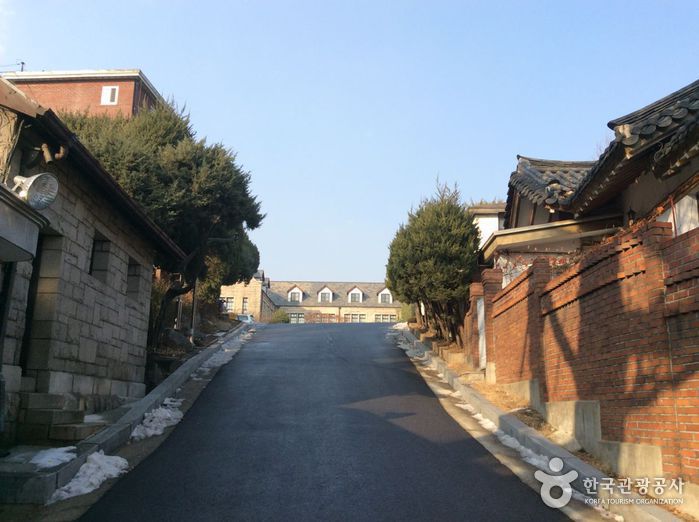
 Français
Français
 한국어
한국어 English
English 日本語
日本語 中文(简体)
中文(简体) Deutsch
Deutsch Español
Español Русский
Русский